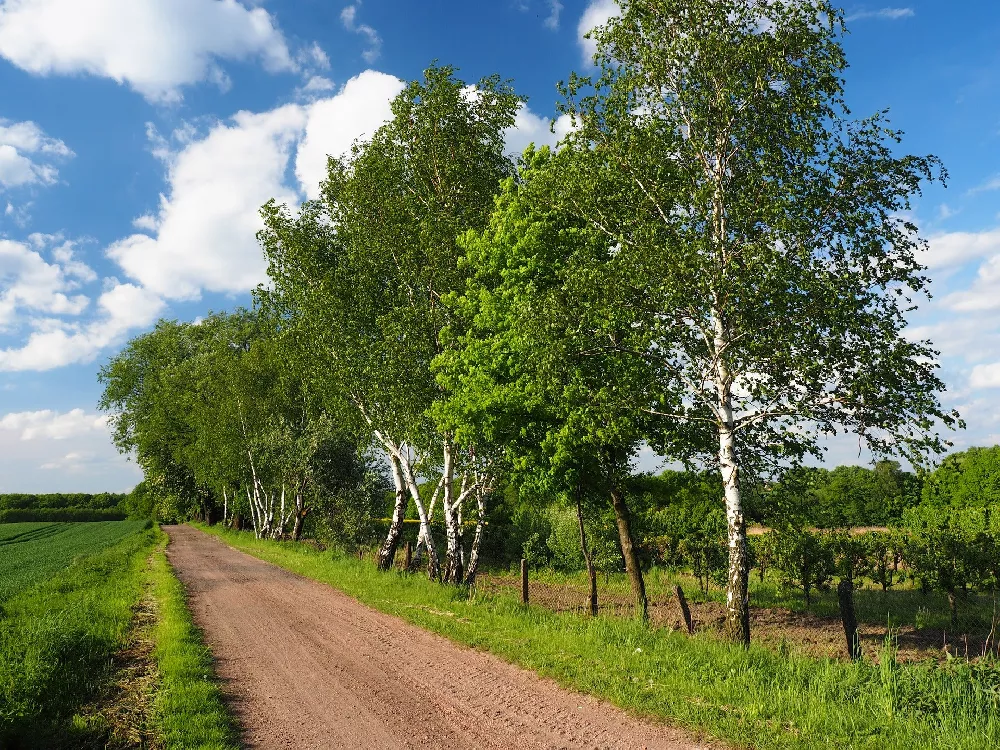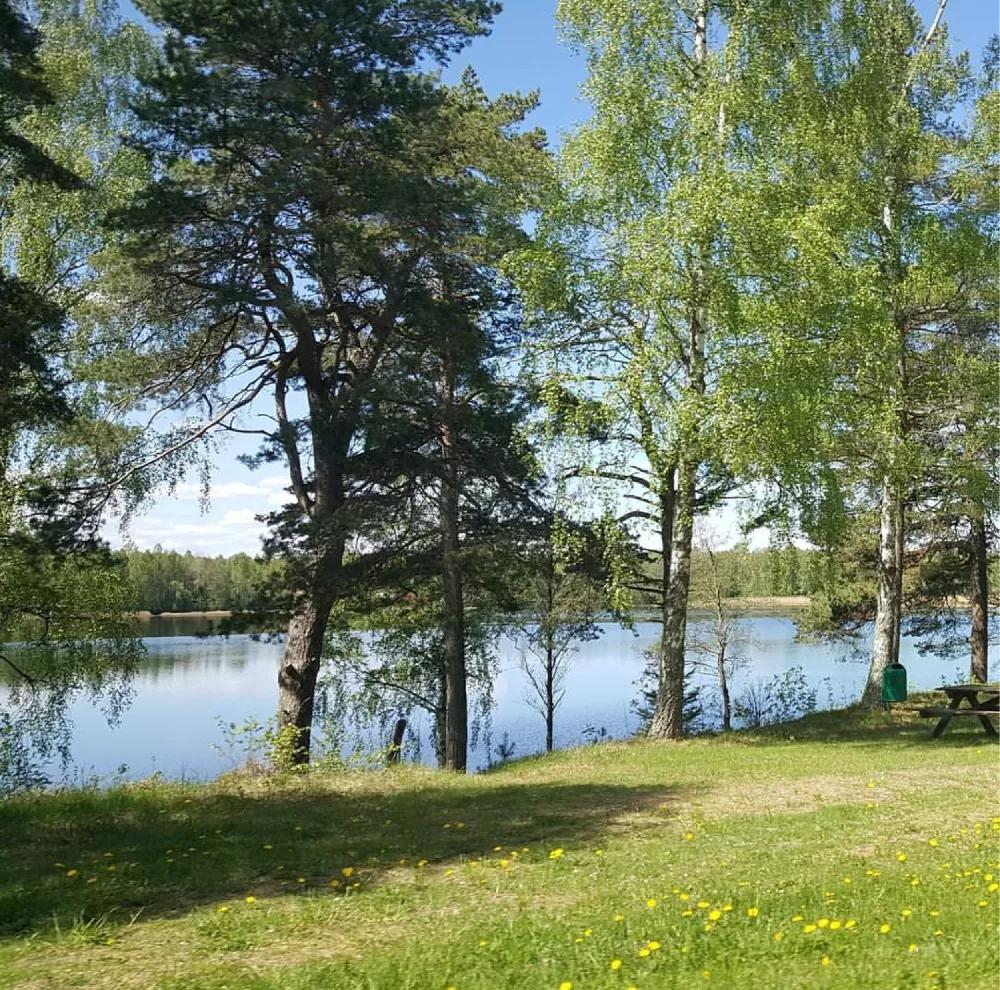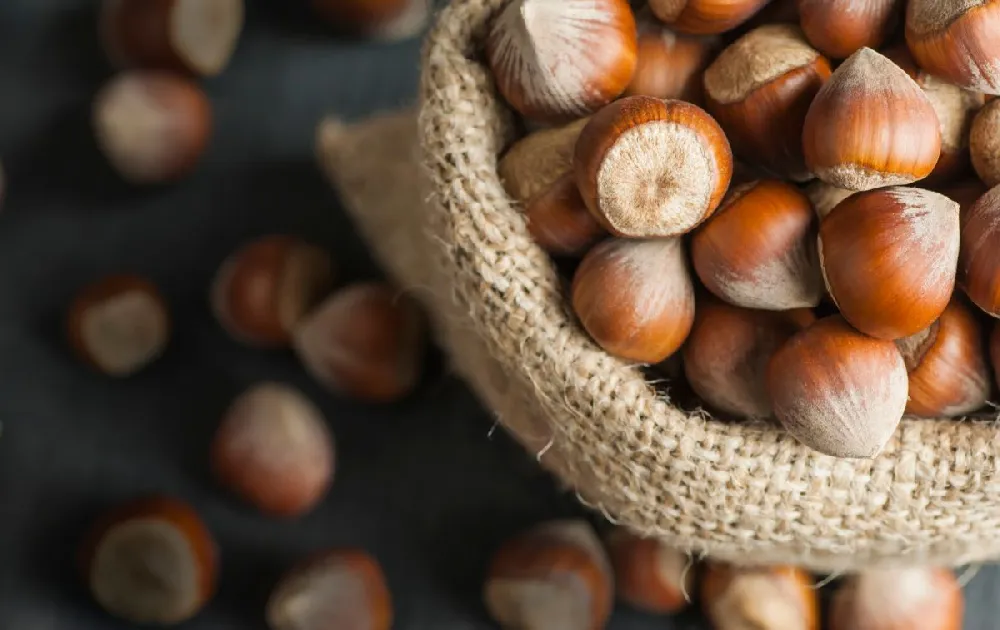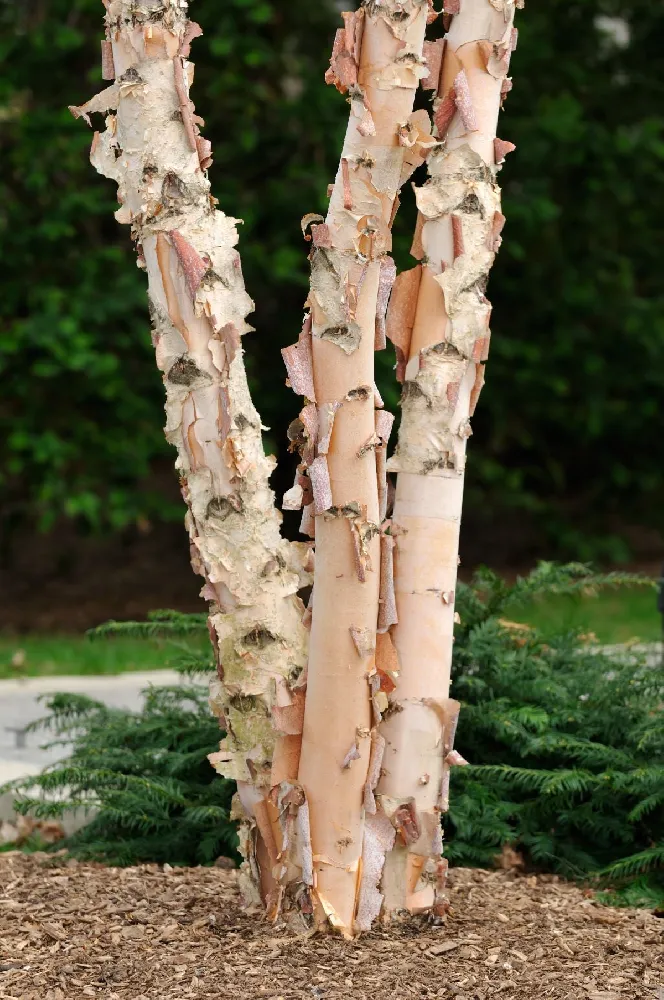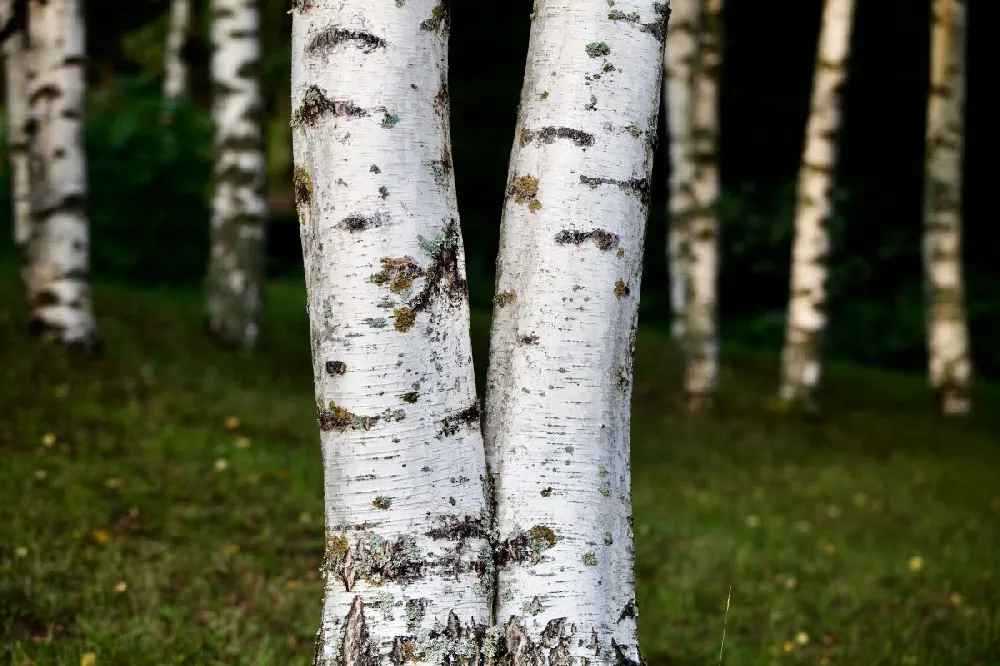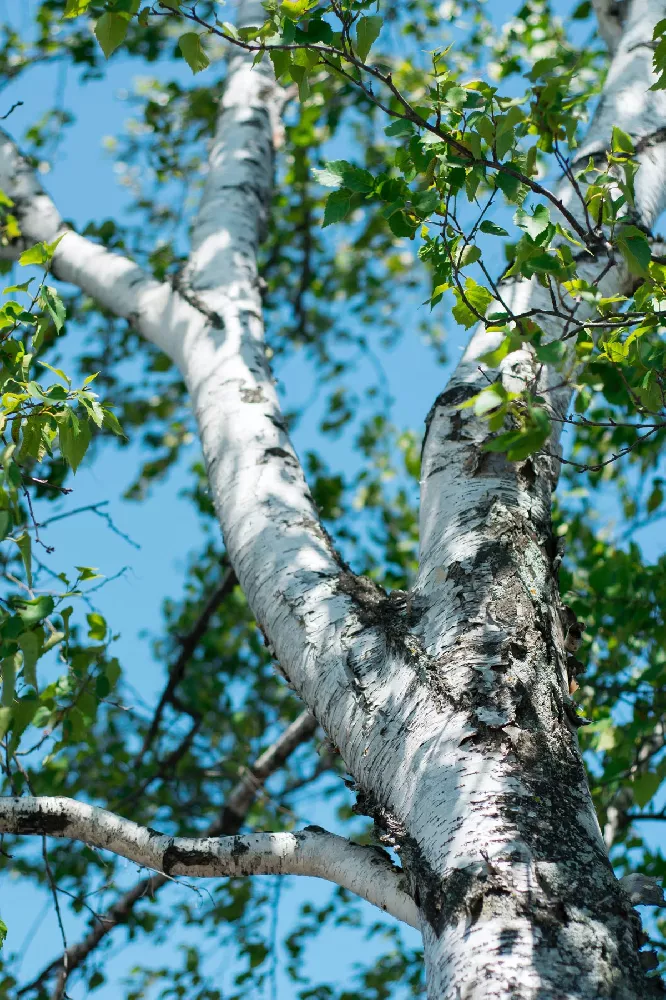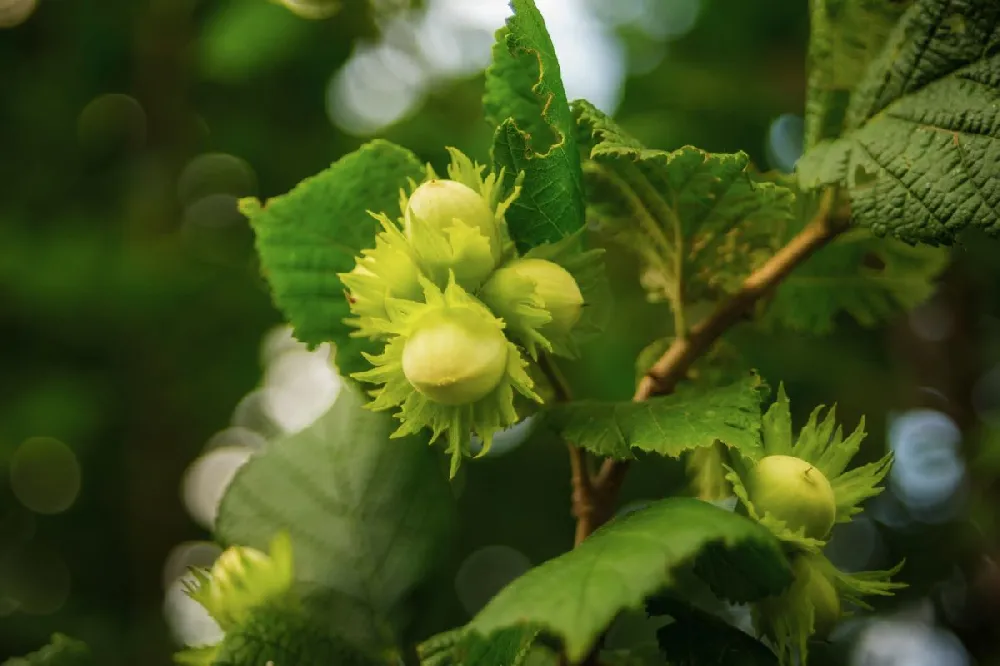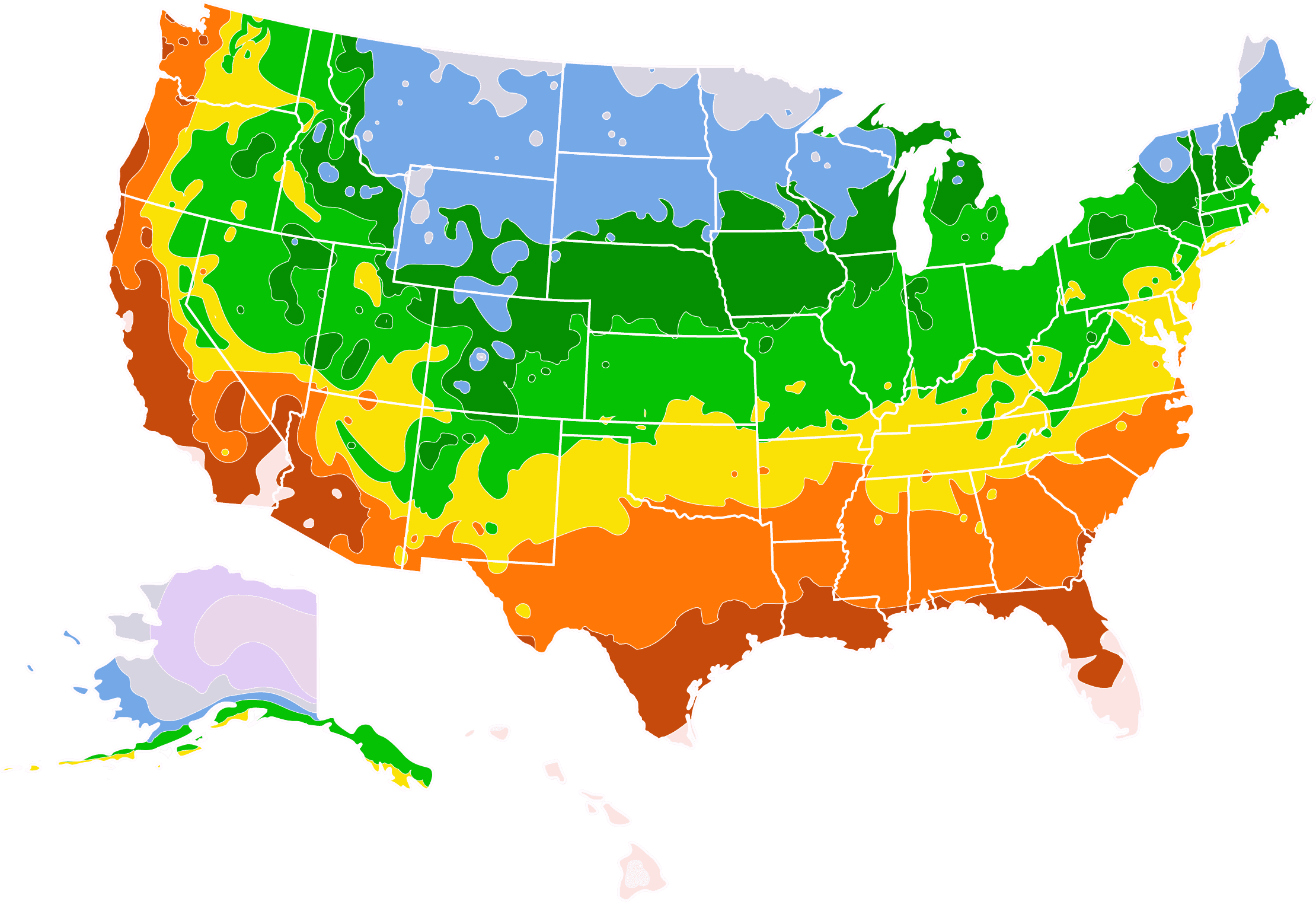- Home >
- Evergreen Trees >
- Heritage River Birch
Heritage River Birch for Sale - Buying & Growing Guide
- Ships in 1-2 days
- 1-Year Warranty Eligible
- Pots or accessories are not included unless specified in the product options.
Shipping Details:
Once your order is shipped, you’ll receive an email with a tracking number and estimated delivery date. Most orders ship immediately, but some items are seasonal and may only ship in spring or fall. These products are noted on the website.
Heritage River birch trees (Betula nigra ‘Cully’) feature a striking bark color and patterns with delicate foliage. This native river birch tree has gained fans among homeowners and landscapers in temperate regions of the U.S. Some of the reasons for this popularity include:
- Heritage River birch trees can grow as single-stemmed trees or in a clump of three to five stems.
- Yellow leaves add fall color, and salmon-shaded bark brightens winter scenery.
- Birches provide cover, food, and housing for many birds and mammals.
Plant Care
Sunlight

Although birch trees can tolerate some shade, they do best in full sun, 6-8 hours of direct light a day.
Watering
Heritage River birches like consistent moisture, but don't appreciate wet feet. Plant in soil that drains well.
Fertilizing

Fertilize with a balanced 10-10-10 fertilizer before the tree breaks dormancy in spring.
Planting and Care
Planting instructions
Heritage River birch trees need moist, rich soil that drains well. The trees thrive with partial to full sunshine. Ensure there are no obstructions overhead. This includes wires, building eaves, or even other trees.
Choose a spot with loose, slightly acidic soil. Birch trees do not like clay compacted soil and won’t tolerate much root disturbance. Dig a hole twice the diameter of the root ball or container. Place the tree in the hole and add some well-rotted manure or compost to the soil from the hole if needed. Replace the mix until half full, tamp it down around the roots, and water deeply. Once it has drained, repeat until the hole is full. Water again and place mulch around and over the hole, leaving the trunk untouched by mulch.
Watering and nutrients
River birch trees are sensitive to even the shortest drought or warm, dry soils. Finding a nice balance for your Heritage River birch is essential. When newly planted, these trees require a lot of water. But too much watering can also damage the young tree’s roots. Without adequate rainfall, you will need to supplement the tree’s water requirements. Always water your birch trees slowly and deeply. Soaker hoses are often helpful in accomplishing this.
All river birch trees appreciate light fertilization and feedings, including newly planted ones. Fertilize in the early spring before the tree buds. Use a balanced multi-purpose product such as a 10-10-10 mixture.
Pruning
You can prune your Heritage River birch tree when it is young to set up its form for the future. Prune in the fall after all the leaves have dropped. Remove broken, crossed, or diseased branches at any time of year. Prune low branches for the desired clearance from the ground over several years. Remove a few branches each year instead of all at once to not shock the tree. Avoid excessive pruning at any time as it will cause more light to reach the ground and raise the soil temperature.
Pests and diseases
Birch leafminers are a common pest that attacks most of the river birch varieties. The attacks usually aren’t severe, and a healthy tree can easily withstand an onslaught. Bronze birch borers are another enemy, but the Heritage River birch tree is resistant to it.
Leaf spot disease causes your tree’s leaves to become spotted and turn yellow before dropping. Young trees may die from this unnatural defoliation, but mature trees usually survive it.
FAQs
How long will my river birch tree live??
A healthy birch tree in optimal conditions can live up to 75 years. Heritage River birch trees are a quick-growing variety. They add about two feet of height each year. Within about 20 years, most birch trees will be topping 30 to 40 feet. It is not unusual for mature Heritage River birch trees to reach heights of 70 feet with a spread of the same diameter.
Where do queen palm trees grow best?
Birch trees will often start showing yellow leaves when they’re experiencing stress. This stress is often from too much heat or water problems, either too much or not enough. Chlorosis is another cause of dropping yellowed leaves, resulting from a lack of micronutrients. Fertilizing the soil beneath the birch tree can slowly reverse chlorosis.
Will my queen palm’s roots damage the sidewalk or foundation?
Growing and maintaining your Heritage River birch trees is easy with good practices. This includes deep, regular waterings, especially in dry weather. Placing a deep layer of mulch around the roots and in a ring around the trunk helps retain moisture. Proper pruning techniques keep the tree healthy and reaching for the sky.
How do palm trees survive hurricane-force winds?
A common practice of planting river birch trees in groups of three is said to help reduce their height. It is believed that the spreading roots are forced to share a smaller area, and thus their size is reduced. Three single-trunked trees are often planted in the same large hole, which causes them to grow as one unit. They will grow to lean away from each other, but they will remain smaller due to the shared space.
Compare Similar Products
Customer Reviews
 River birch
River birchwonderful! Already grown afoot!
 Nice Trees
Nice Treesjust planted last weekend after having to keep in garage for 1.5 weeks. Starting to grow leaves.
